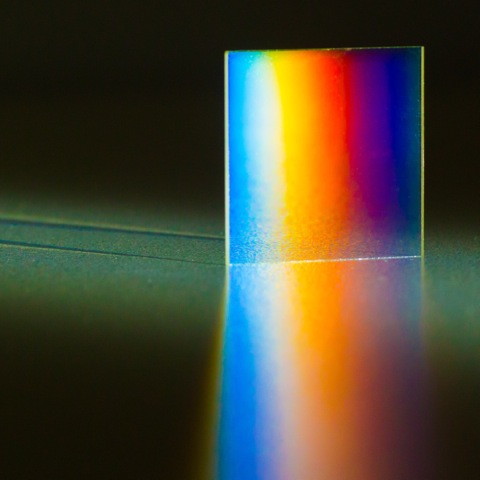Geometric Phase Holograms and Multi-Twist Retarders:
Surprising control of phase and polarization via patterned birefringence
Dr. Michael Escuti, North Carolina State University
It is well known that anisotropic materials can be used to transform polarization, but it is something of an underground insight that they can also be used to control phase, via the “geometric phase” (a.k.a. Pancharatnam-Berry phase) effect. This means that the phase of a wave passing an inhomogenous birefringent element is directly proportional to the optical axis orientation profile, a completely different mechanism than the conventional “dynamic phase” arising from optical path length differences. As such, we able to create thin-film versions of conventional refractive and diffraction optical elements as Geometric Phase Holograms (GPHs), which implement a continuous (if desired) and arbitrarily chosen phase (without 2pi resets) with a 10,000s of rad/cm dynamic range within a thin-film.
Polarization gratings are an example of this, with a truly linear phase profile (i.e. a prism), which act as highly efficient diffraction gratings with 100% diffraction into a single order. Other GPH examples include ideal lenses, vortex retarders, vector apodizing phase plates, and even Fourier holograms.
We have also developed a chiral liquid crystal thin-film into a family of complex birefringent elements, called Multi-Twist Retarders (MTRs), which offer remarkably effective control of broadband polarization transformation. These can be configured for achromatic retardation, or alternatively, they can be configured for highly chromatic retardation elements, impossible otherwise.
In this talk, Dr. Michael Escuti discusses the fundamental insights into GPHs and MTRs, and in particular, expand on how they offer meaningfully distinct opportunities for astronomical instruments over conventional optical elements.
Dr. Michael Escuti is Associate Professor of Electrical Engineering at North Carolina State University (NCSU). Along with his students and post-doctoral scholars, he pursues interdisciplinary research topics in photonics, opto-electronics, telecom, flat-panel displays, etc. He also co-founded the company ImagineOptix to commercialize the technology developed in his academic lab. He has been recognized by the Presidential Early Career Award for Scientists and Engineers (PECASE, 2011) and the Alcoa Foundation Engineering Research Achievement Award (2011) for his work at NCSU. He earned his PhD and MS degrees at Brown University and completed a Post-Doc at the Eindhoven University of Technology (Netherlands). As of 2013, he is a named inventor on 16 issued and 12 pending patents. He has published more than 90 refereed journal and conference publications, has presented 23 invited research talks, and has co-authored 1 book chapter.

